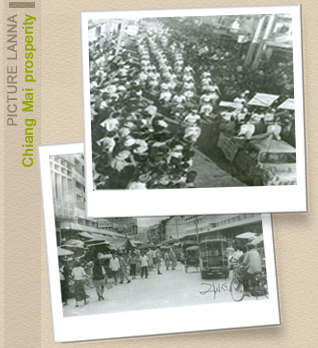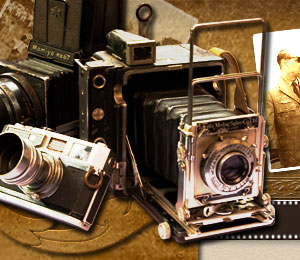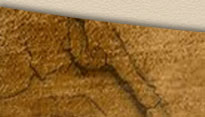|
…Where did we come from? How did our society develop?... are questions we often ask ourselves. Most people consciously think of their past, which becomes the foundation to the present. Concerns and curiosity cause people to turn to study the roots of origin of their society.
One of the best tools to study the past is through historical evidence of the past actions that remain until the present, in both descriptive and non-descriptive forms.
The non-descriptive evidence such as religious buildings, tools, equipment, or paintings are not in a textual format. This type of evidence or artifacts can be studied from the material, architecture structure and patterns shown in the piece. They reflect the beliefs, craftsmanship and wisdom of that specific society.
Once humans invented alphabets for their daily communication, alphabets and words became a medium to record and pass on stories and happenings of the society. The telling can be found in stone inscriptions, legends, chronicles, literature and journals, etc.
One interesting point here is that although humans have learned to write and record things by means of alphabets, it does not mean that the records of non-descriptive media will disappear. On the contrary, this evidence will gain even more significant roles as it becomes a support and counter check for the descriptive kind. When the two kinds of evidence are used together, they create a network of knowledge that renders a complete story of each period in history. There are over 200 temples in Chiang Mai, some abandoned, some are still in use with monks residing in them and performing religious activities. Some of those temples were built in the time of Phaya Mang Rai, for example, Wat Chiang Man, Wat Phrasingha, Wat Suang Dok, Wat Jed Yod. The huge number of temples forms solid evidence confirming the findings gathered from legends and stone inscriptions about the establishment of Chiang Mai, its being the center of Lankawong Buddhism and its being a community in the upper part of the river basin since the 20th Century B.E. This concrete evidence also projects how highly skilled the crafters were and how much faith the people in those periods possessed.
Since King Rama V’s reign, the western colonial expansion has spread along with the colonization of the lands around Siam. Besides the power and control over the lands, the westerners brought in new educational methods along with a flow of “new gadgets” from the western world. These streams of development caused great changes in the Thai society in terms of material development and changes in the social values and concepts. The lifestyle changed and use of daily utensils and household products were either imported or copied from the west. One of the fashionable and useful import items was the camera, a piece of equipment that later became beneficial for recording people’s life in different settings and times. The popularity of the camera and photography among the upper class in the capital and large cities assembled in a huge collection of photos that has been carefully stored at the National Hall of Archives, open for everyone to view.
|
Today, a number of the scholars accept the use of photography in combination with other kinds of evidence to explain the past societies. Compared to murals, photos can show more reliable information since it cannot be distorted whereas murals are sometimes distorted by the painters’ own imagination. Furthermore, in some cases photos can give a better and more reliable detail than the written statement in the descriptive evidence.
Chiang Mai’s archives of past photos were made possible by the hands of Boonserm Satrabhaya. His collection functions as the jigsaw pieces for the completion of the history of the past 60 years of Lanna.
These are the instances of the economic growth of the city, photos of traffic jams along Vichayanonda Road in 1952 (the present site of Warorot Market, Tonlamyai Market and Nawarat Market). |
 |
| Another photo that also reflects the thriving of Chiang Mai city, that spread from the center of trade in the upper part of the town, shows the parade of Lambrettas leading the beauty pageant contestants in 1961. |
 |
|
Another important picture was the scene of the fire burning down the markets in Kad Luang and Kad Tonlamyai area in 1968 which became the talk of the town and the story passed on for many, many years. However, the sadness of the past might have subsided and the younger generation now may not understand the situation anymore.
|
The photos that are kept until today can still project the phenomena as the feelings shown on peoples’ faces have remained.
|
|
 |
 |
|
The startled people, the chaos and expressions of people can be seen clearly enough to realize the severity of the loss, maybe clearer than any written records could convey.
|
The same is true for the Nawarat Bridge. If there weren’t any photos of the Khua Lek (Steel Bridge) we would not have been able to imagine what the original one looked like and how it was changed from a steel bridge to a concrete one. We may even be able to guess that it was because the old one was rusted and ruined. The past pictures of Chiang Mai show us how the city grew and how much the population has increased as well as how much the number of cars increased causing congestion between the two river banks of the city to the point that the old bridge could no longer support the traffic.

|
We learned from the photos the lost memories of such temples like Wat Chedi Sung and the north-south river transportation routes. Wat Chedi Sung was built on the bank of the Ping River in Hod District. The exploration along the Ping River southwards showed that there were many temples along the way from Chiang Mai to Ayutthaya and further to Bangkok.
| |
 |
The construction of the temples along the route makes us realized that the river used to be a main transport route connecting Chiang Mai to the southern cites along the bank before the rail was extended to Chiang Mai. The temples also reflect the people’s belief especially for those who used these paths for transport.
The architectural structure and stucco designs of the temples and treasures found inside the Chedis tell us how highly skilled the craftmen of those days were and how rich the kingdom was during the 20th-22nd Century B.E. The temples however, were flooded over after the construction of the Bhumibol Dam so the history of these places remains only as a tale and lore to pass on verbally. |
| |
The Working Group on Living Library Project |
| |
For Learning Society, the Northern Information Dissemination Section |
| |
July, 2008 |
|


